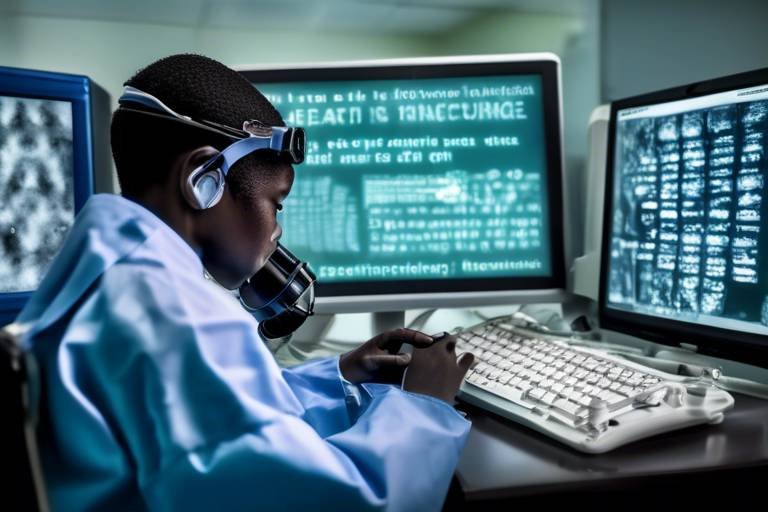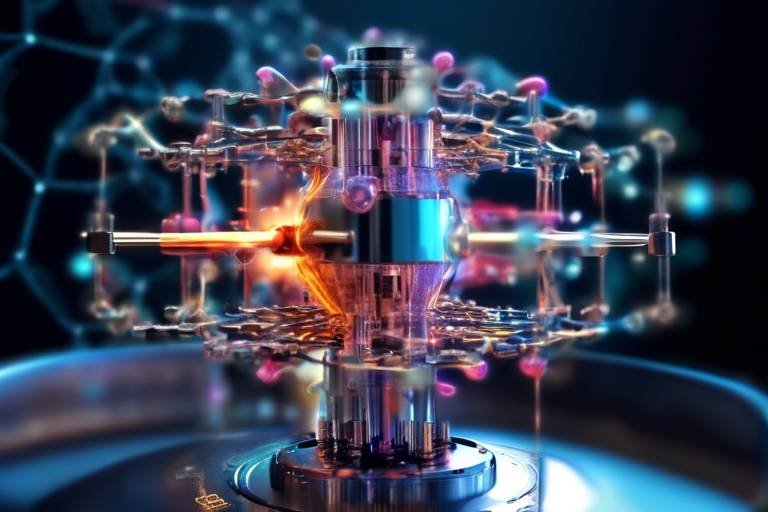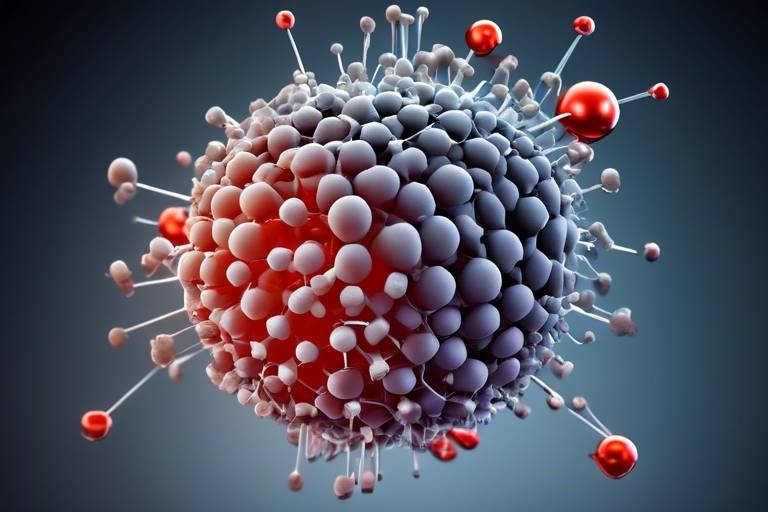How Robotics is Enhancing Disaster Response
The world we live in is unpredictable, often throwing disasters our way when we least expect them. Whether it’s a natural calamity like an earthquake or a man-made crisis, the need for rapid and efficient response is paramount. Enter robotics—a game changer that’s revolutionizing how we tackle these emergencies. Imagine a world where drones soar through the skies, assessing damage and delivering supplies, while ground robots navigate treacherous terrains to rescue those in need. This isn’t science fiction; it’s happening right now! Robotics is not just enhancing disaster response; it’s transforming it into a more effective, safer, and quicker process.
In recent years, we’ve witnessed an incredible evolution in robotic technology, making them indispensable tools in disaster management. These innovations are not only about speed but also about precision and safety. For instance, using robots in hazardous environments minimizes the risk to human responders, allowing them to focus on strategic decision-making rather than putting themselves in harm's way. The integration of robotics into disaster response efforts is akin to having a superhero team ready to spring into action at a moment's notice, equipped with the latest technology to save lives.
As we delve deeper into this topic, we’ll explore the various types of robots utilized in disaster scenarios, from autonomous drones to ground-based robots, and how they each play a critical role in enhancing situational awareness and operational efficiency. We’ll also discuss the collaboration between these robotic systems and human responders, highlighting the importance of training, communication, and coordination. While the benefits are clear, we cannot overlook the challenges and limitations that come with deploying these technologies. Finally, we’ll take a glimpse into the future, where advancements in artificial intelligence and mobility solutions promise to further elevate the capabilities of robotics in disaster response.
- What types of robots are commonly used in disaster response?
Robots used in disaster response include autonomous drones for aerial surveillance and ground-based robots for navigating difficult terrains. - How do drones assist in search and rescue operations?
Drones equipped with thermal imaging can locate survivors in rubble, significantly speeding up rescue efforts. - What are the main challenges faced by robotics in disaster scenarios?
Challenges include technical limitations in extreme conditions, high operational costs, and the need for regulatory frameworks. - What does the future hold for robotics in disaster response?
Advancements in AI and mobility will enhance robotic capabilities, enabling them to adapt to dynamic environments and perform complex tasks more efficiently.
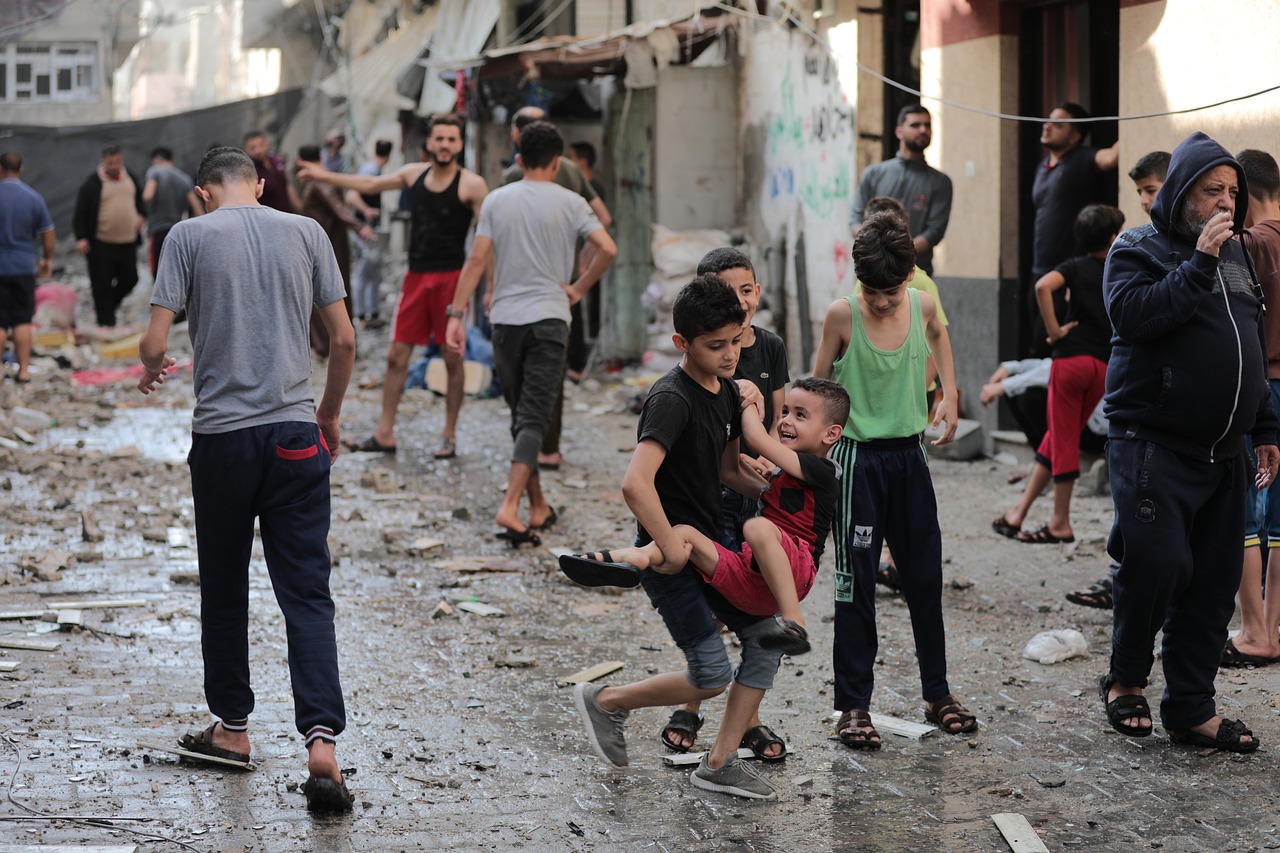
Robotic Types in Disaster Response
In the ever-evolving landscape of disaster response, robots have emerged as pivotal players, each tailored to tackle unique challenges that arise during emergencies. From the skies to the ground, these sophisticated machines are designed not just to assist but to enhance the overall efficacy of rescue operations. Understanding the various types of robots utilized in disaster scenarios is crucial for recognizing their impact on saving lives and improving situational awareness.
One of the most prominent categories of robots in disaster response is autonomous drones. These aerial marvels provide a bird's-eye view of disaster zones, allowing responders to assess damage, locate survivors, and deliver critical supplies. Equipped with advanced sensors and imaging technology, drones can traverse areas that are otherwise inaccessible, offering invaluable support in the immediate aftermath of a disaster.
On the ground, ground-based robots take center stage. These machines are engineered to navigate treacherous terrains, such as collapsed buildings or debris-laden streets. They can perform hazardous tasks, such as searching for survivors or clearing obstacles, thereby reducing the risk to human responders. The versatility of ground-based robots makes them indispensable during search and rescue missions, as they can adapt to various environments and operational requirements.
In addition to drones and ground robots, there are also hybrid robots that combine both aerial and ground capabilities. These innovative machines can switch between flying and driving, maximizing their operational potential. As technology continues to advance, we can expect to see even more specialized robots designed for specific disaster scenarios, further enhancing our ability to respond effectively.
To illustrate the diversity of robotic types in disaster response, consider the following table:
| Type of Robot | Primary Function | Benefits |
|---|---|---|
| Autonomous Drones | Aerial surveillance, damage assessment | Speedy response, access to remote areas |
| Ground-Based Robots | Search and rescue, debris clearance | Safety for human responders, operational versatility |
| Hybrid Robots | Combination of aerial and ground tasks | Maximized operational capabilities |
As we delve deeper into the world of robotics in disaster response, it's essential to recognize that each type of robot serves a distinct purpose, yet they all share a common goal: to enhance the effectiveness and safety of disaster response efforts. The synergy between these robotic systems not only augments human capabilities but also revolutionizes how we approach emergencies. The future holds exciting possibilities as we continue to innovate and integrate these technologies into our disaster response frameworks.

Autonomous Drones
When disaster strikes, every second counts, and that's where come into play. These remarkable flying machines are not just a cool tech gadget; they are game-changers in disaster response. Imagine a scenario where a natural disaster has left a community in chaos. Roads are blocked, and the situation is dire. Autonomous drones swoop in, providing real-time aerial surveillance that can make all the difference. They can assess damage, locate survivors, and even deliver essential supplies to those in need.
One of the standout features of these drones is their ability to operate in inaccessible areas. Think about it: after an earthquake, many regions become hazardous for human responders. Autonomous drones can fly over dangerous terrains, capturing high-resolution images and data without putting lives at risk. This capability not only speeds up the response time but also enhances the situational awareness of rescue teams on the ground.
In search and rescue operations, drones equipped with thermal imaging technology can detect body heat through rubble, helping to locate survivors who might otherwise go unnoticed. This is not just about efficiency; it's about saving lives. The speed at which these drones can operate means that they can provide crucial information to rescue teams before they even arrive on-site.
Furthermore, the role of autonomous drones extends beyond just reconnaissance. They can also be used for delivery of essential supplies. In emergencies, every minute matters, and having the ability to deliver food, water, and medical supplies directly to those in need can significantly impact recovery efforts. These drones can navigate through treacherous conditions, ensuring that help reaches the most vulnerable populations quickly.
As we look to the future, the integration of artificial intelligence will further enhance the capabilities of autonomous drones. They will be able to analyze data in real-time, make decisions on the fly, and adapt to changing conditions in disaster scenarios. This evolution will not only improve efficiency but also allow for a more coordinated response between drones and human teams.
In summary, autonomous drones are revolutionizing disaster response by providing invaluable support in search and rescue operations, delivering essential supplies, and gathering critical data. Their ability to operate in dangerous environments while enhancing situational awareness is a testament to the potential of technology in saving lives and improving outcomes during emergencies.
- What types of disasters can autonomous drones assist with?
Autonomous drones can be used in a variety of disasters, including earthquakes, floods, hurricanes, and wildfires, providing aerial surveillance and support in each scenario. - Are autonomous drones safe to use in disaster zones?
Yes, autonomous drones are designed to operate safely, utilizing advanced navigation systems to avoid obstacles and minimize risks to human responders. - How do drones deliver supplies in emergencies?
Drones can carry payloads of essential supplies and use GPS technology to navigate to specific locations, ensuring timely delivery to those in need.

Search and Rescue Operations
In the aftermath of a disaster, every second counts, and the difference between life and death can hinge on how quickly and effectively search and rescue operations are conducted. This is where autonomous drones truly shine, transforming the landscape of emergency response. Imagine a situation where a building has collapsed, and survivors are trapped beneath the rubble. Traditional search methods can be slow and perilous, but with drones equipped with thermal imaging technology, rescuers can quickly locate heat signatures of trapped individuals, guiding teams to them with pinpoint accuracy.
These drones are not just eyes in the sky; they are equipped with sophisticated sensors and cameras that provide real-time video feeds back to command centers. This allows rescue teams to assess the situation from a safe distance, making informed decisions about how to proceed without putting more lives at risk. The use of drones minimizes the need for human responders to enter potentially dangerous environments, thereby enhancing their safety.
Additionally, drones can cover vast areas in a fraction of the time it would take a human team, which is especially critical in situations where large-scale evacuations are necessary. They can survey disaster-stricken areas, creating detailed maps that help responders identify the most affected zones and prioritize their efforts. The data collected can be vital in forming a comprehensive response strategy that maximizes resource allocation and minimizes waste.
Furthermore, the ability to deliver supplies directly to those in need is another game-changing aspect of drone technology. In scenarios where roads are blocked or unsafe to traverse, drones can transport essential items such as food, water, and medical supplies directly to isolated individuals or groups. This capability not only saves time but also ensures that critical aid reaches those who need it most, potentially saving lives in the process.
In summary, the integration of autonomous drones into search and rescue operations is revolutionizing how we respond to disasters. By leveraging technology, we can enhance situational awareness, improve operational efficiency, and ultimately, save more lives. As we continue to develop and refine these technologies, the future of disaster response looks brighter than ever.
- How do drones locate survivors in disaster scenarios? Drones equipped with thermal imaging can detect body heat, allowing them to identify survivors trapped under debris.
- What types of supplies can drones deliver during a disaster? Drones can transport essential items such as food, water, medical supplies, and even communication devices to remote or inaccessible areas.
- Are drones safe to use in disaster response? Yes, drones enhance safety by allowing responders to assess dangerous environments from a distance without putting themselves at risk.
- How do drones communicate with rescue teams? Drones can transmit real-time video and data back to command centers, enabling effective coordination and decision-making during operations.
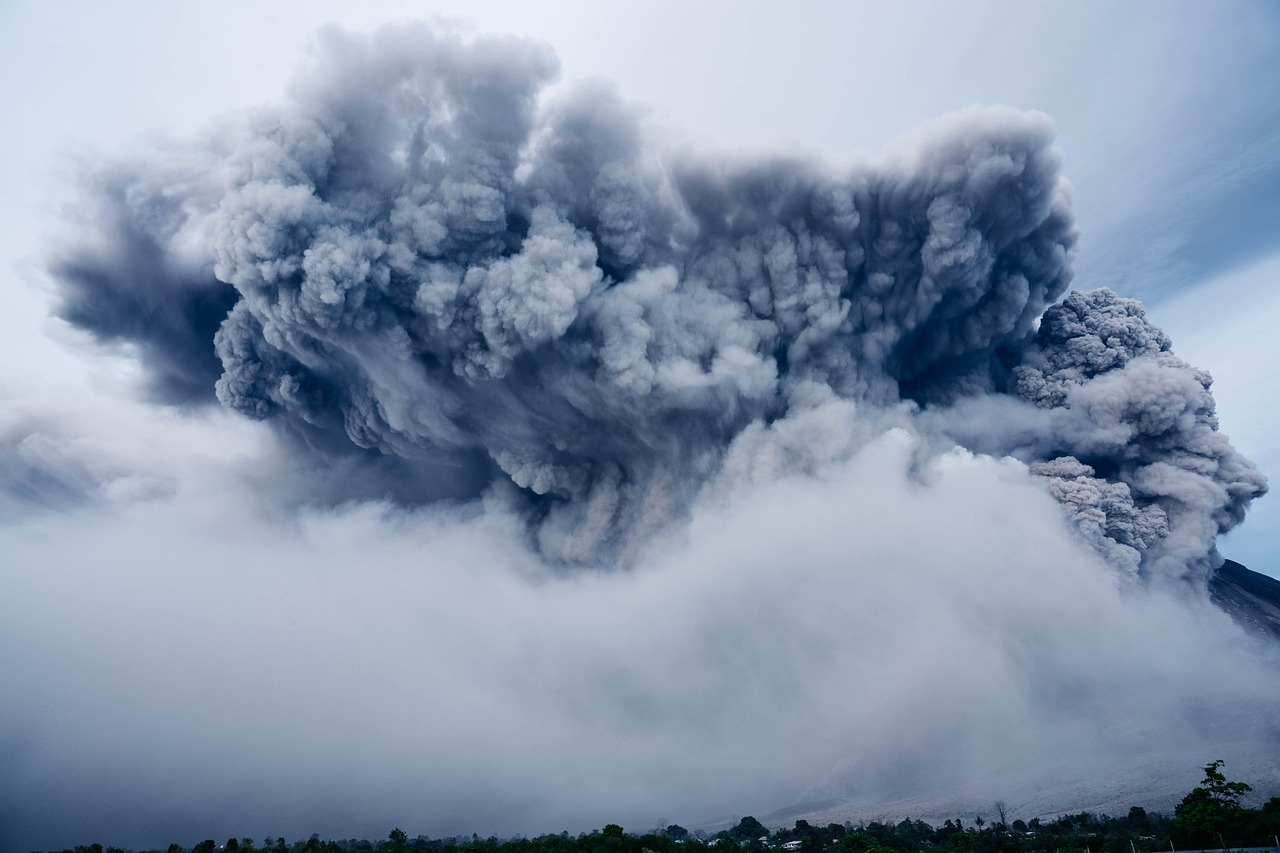
Real-Time Data Collection
In the chaotic aftermath of a disaster, having access to real-time data can make all the difference. Imagine being able to see the entire landscape from above, pinpointing areas that need immediate attention, and understanding environmental conditions that could hinder rescue efforts. This is precisely what autonomous drones offer during disaster response scenarios. Equipped with advanced sensors and imaging technology, these drones can capture high-resolution images and gather critical data almost instantaneously. This capability not only enhances situational awareness but also empowers responders to make informed decisions quickly and efficiently.
For instance, drones can measure temperature, humidity, and air quality, providing vital information that can affect rescue operations. By analyzing this data, emergency teams can prioritize their efforts based on the most pressing needs. Moreover, the ability to conduct aerial surveys allows responders to assess damage in real-time, identifying blocked roads, collapsed buildings, and other hazards that may not be visible from the ground. This is akin to having a bird's-eye view of the disaster zone, where every second counts.
Additionally, the integration of geospatial data into the drones' systems enables them to create detailed maps of affected areas. These maps can be crucial for planning evacuation routes, establishing command centers, and coordinating logistics for delivering aid. The real-time data collected can also be shared with various stakeholders, including government agencies, NGOs, and local communities, ensuring that everyone involved in the response is on the same page.
In summary, the role of drones in real-time data collection during disaster response is transformative. They not only enhance the efficiency of rescue operations but also ensure that resources are allocated where they are needed most. As technology continues to advance, we can expect these capabilities to become even more sophisticated, further improving our ability to respond to disasters swiftly and effectively.
- How do drones collect real-time data during disasters? Drones are equipped with sensors and imaging technology that allow them to capture high-resolution images, measure environmental conditions, and create detailed maps of affected areas.
- What types of data can drones gather? Drones can collect various types of data, including temperature, humidity, air quality, and visual images of the disaster zone.
- How does real-time data help in disaster response? Real-time data enables responders to make informed decisions quickly, prioritize rescue efforts, and coordinate logistics effectively.
- Can drones operate in adverse weather conditions? While drones have advanced significantly, extreme weather conditions can still pose challenges to their operation and performance.
- What is the future of drones in disaster response? The future looks promising with advancements in AI, machine learning, and sensor technology that will enhance the capabilities of drones in disaster scenarios.

Delivery of Essential Supplies
In the chaos that follows a disaster, getting essential supplies to those in need can be a monumental task. This is where autonomous drones come into play, acting as lifelines for affected communities. Imagine a scenario where roads are blocked, and traditional delivery methods are rendered useless. Drones swoop in like modern-day superheroes, equipped to deliver food, water, and medical supplies directly to those who are stranded. With their ability to fly over obstacles and reach remote areas, these aerial devices ensure that help arrives swiftly and efficiently.
One of the most significant advantages of using drones for supply delivery is their speed. In emergencies, every second counts, and the faster aid can reach those in need, the better the outcomes. Drones can cover vast distances in a fraction of the time it would take ground vehicles, making them an invaluable asset in disaster response. For instance, a drone can deliver a package of medical supplies to a remote village cut off by floodwaters, something that might take days for a truck to achieve.
Moreover, the technology behind these drones is continuously evolving. Equipped with advanced navigation systems and real-time tracking capabilities, they can avoid obstacles and adjust their flight paths as needed. This adaptability means that even in chaotic environments, drones can find safe routes to deliver their precious cargo. For example, during the aftermath of an earthquake, drones can be programmed to identify the safest landing zones to drop off supplies, minimizing the risk to both the drone and the recipients.
While the benefits are clear, it's essential to consider the types of supplies that drones can deliver. Typically, these include:
- Food and Water: Basic necessities that are crucial for survival.
- Medical Supplies: First-aid kits, medications, and other critical health resources.
- Communication Devices: Tools that help reconnect communities and coordinate rescue efforts.
As we look to the future, the integration of drone technology in disaster response is expected to expand even further. Researchers are exploring ways to increase payload capacities, allowing drones to carry larger and heavier supplies. This advancement could revolutionize how we respond to disasters, ensuring that even the most remote locations receive the help they need.
In conclusion, the delivery of essential supplies via drones not only enhances the efficiency of disaster response but also saves lives. As technology continues to advance, we can expect these robotic heroes to become an even more integral part of our emergency response toolkit.
- How do drones navigate in disaster zones?
Drones are equipped with advanced GPS and navigation systems that allow them to avoid obstacles and find safe routes, even in chaotic environments.
- What types of supplies can drones deliver?
Drones can deliver a variety of essential supplies, including food, water, medical supplies, and communication devices.
- Are there limitations to drone deliveries?
Yes, drones have limitations in terms of payload capacity, weather conditions, and battery life, which can affect their operational range and effectiveness.
- How do drones improve response times in emergencies?
Drones can quickly reach remote or inaccessible areas, delivering supplies much faster than traditional ground vehicles, which may be hindered by debris or blocked roads.

Ground-Based Robots
When it comes to disaster response, are like the unsung heroes of the operation. These machines are specifically designed to navigate through challenging terrains, and they bring a whole new level of support to search and rescue missions. Imagine a scenario where human responders are faced with a collapsed building or a hazardous environment; this is where ground-based robots come into play, performing tasks that would be too dangerous for humans. Equipped with advanced sensors and mobility features, these robots can traverse through debris, rubble, and even rough terrain, effectively extending the reach of human rescuers.
One of the key advantages of ground-based robots is their ability to perform hazardous tasks. For instance, they can safely investigate unstable structures or hazardous materials, providing crucial information without putting human lives at risk. This capability not only enhances safety for responders but also increases the overall effectiveness of rescue operations. Ground robots can be equipped with various tools, such as robotic arms for debris removal, cameras for surveillance, and even thermal imaging systems to detect heat signatures of trapped individuals.
Moreover, these robots can operate in tandem with human teams, creating a seamless workflow that enhances operational efficiency. For example, while a human responder might be coordinating the rescue effort, a ground-based robot can be deployed to scout the area, gather data, and relay information back to the team in real-time. This collaboration allows for quicker decision-making and a more organized approach to disaster response. The integration of ground-based robots into disaster scenarios is not just about having more tools at your disposal; it's about redefining how we respond to emergencies.
However, the implementation of ground-based robots is not without its challenges. Technical limitations, such as navigating through extreme conditions or dealing with complex environments, can hinder their performance. Additionally, the cost associated with acquiring and maintaining these advanced robotic systems can be a barrier for many organizations. Nevertheless, as technology continues to advance, the potential for ground-based robots to revolutionize disaster response remains significant.
In summary, ground-based robots are proving to be invaluable assets in the realm of disaster response. They not only enhance safety for human responders but also improve the overall effectiveness of rescue operations. As we continue to innovate and integrate these technologies into our emergency response frameworks, we can look forward to a future where ground-based robots play an even more critical role in saving lives during crises.
- What types of ground-based robots are used in disaster response? Ground-based robots can vary widely, including wheeled robots for flat surfaces, tracked robots for rough terrain, and humanoid robots designed for specific tasks.
- How do ground-based robots communicate with human responders? Ground-based robots typically use wireless communication systems to relay data, images, and video feeds back to human teams, ensuring effective coordination.
- Are ground-based robots safe to operate in hazardous environments? Yes, ground-based robots are designed to operate in hazardous conditions, minimizing risks to human responders while gathering critical information.
- What advancements are being made in ground-based robot technology? Advancements include improved mobility solutions, enhanced sensor capabilities, and the integration of artificial intelligence for better decision-making in dynamic environments.

Collaboration with Human Responders
The integration of robotics into disaster response is not just about deploying machines; it's about creating a harmonious partnership between technology and human ingenuity. This collaboration significantly enhances the efficiency and safety of operations during crises. Imagine a scenario where a team of skilled responders is working alongside highly advanced robots, each complementing the other's strengths. While humans bring critical thinking, empathy, and adaptability to the table, robots offer precision, endurance, and the ability to operate in hazardous environments where human presence might be risky.
One of the most exciting aspects of this collaboration is the opportunity for training and simulation. Training programs that incorporate robotic technologies are essential for preparing human responders to effectively utilize these tools. By simulating real-life disaster scenarios, responders can practice their skills in a controlled environment, learning how to communicate and coordinate with robotic systems. This kind of preparation ensures that when disaster strikes, teams can hit the ground running, fully equipped to leverage the capabilities of their robotic counterparts.
Moreover, effective communication systems between robots and human teams are vital for coordination. These systems enable swift decision-making, allowing responders to adapt quickly to changing conditions on the ground. For instance, if a drone identifies a blocked road due to debris, it can communicate this information in real-time to human teams, who can then redirect their efforts accordingly. This level of coordination not only improves operational efficiency but also enhances the overall effectiveness of disaster response efforts.
In addition, the use of robotics in collaboration with human responders can address various challenges faced during emergencies. For example, ground-based robots can undertake dangerous tasks, such as searching for survivors in unstable structures, while human responders focus on providing medical assistance and psychological support to those in need. This division of labor not only maximizes the use of available resources but also ensures that human responders are kept out of harm's way as much as possible.
Ultimately, the collaboration between robots and human responders represents a significant leap forward in disaster management. By combining the strengths of both, we can create a more resilient response framework that not only saves time but also saves lives. As we continue to refine this partnership, the future of disaster response looks increasingly bright, promising safer and more effective outcomes for communities in crisis.
- How do robots communicate with human responders during a disaster?
Robots are equipped with advanced communication systems that allow them to relay real-time data and updates to human teams, ensuring coordinated efforts. - What types of training are available for responders working with robots?
Training programs often include simulations that mimic real-life disaster scenarios, focusing on how to effectively utilize and communicate with robotic systems. - Can robots operate in all types of disaster environments?
While robots are designed to handle many challenging conditions, extreme weather and debris can pose technical challenges that may limit their effectiveness.

Training and Simulation
In the realm of disaster response, are not just beneficial; they are essential. Imagine a firefighter preparing for a blaze, but instead of just practicing with a hose, they are also learning to operate a drone that can survey the scene from above. This blend of traditional training with cutting-edge technology creates a more versatile and prepared responder. The integration of robotic technologies into training programs equips human responders with the skills they need to effectively utilize these advanced tools during real-life emergencies.
Robotic training simulations can replicate a variety of disaster scenarios, ranging from natural disasters like earthquakes and floods to man-made crises such as industrial accidents. These simulations provide responders with a safe environment to practice their skills, allowing them to gain confidence and experience without the immediate pressures of a real disaster. For instance, responders can learn how to coordinate with drones in locating survivors or how to deploy ground-based robots for hazardous tasks.
Moreover, these training programs often incorporate real-time decision-making scenarios, where responders must react to rapidly changing situations. This aspect of training is crucial, as it mimics the unpredictability of actual disaster environments. By utilizing immersive technologies such as virtual reality (VR) and augmented reality (AR), trainees can engage in lifelike simulations that enhance their situational awareness and operational efficiency. The following table outlines some key components of effective training programs:
| Training Component | Description |
|---|---|
| Simulation Scenarios | Realistic disaster scenarios using VR/AR technologies. |
| Robotic Operation | Hands-on training with drones and ground robots. |
| Team Coordination | Practicing communication and collaboration between human teams and robots. |
| Decision-Making Exercises | Real-time decision-making drills to enhance responsiveness. |
As we look towards the future, the importance of ongoing training and simulation cannot be overstated. These programs must evolve alongside advancements in robotic technologies to ensure that responders are not only familiar with the tools at their disposal but also adept at using them in high-pressure situations. By fostering a culture of continuous learning, we can ensure that disaster response teams are always prepared to face the unexpected.
- What types of robots are used in disaster response? Various robots, including drones and ground vehicles, are employed to enhance efficiency and safety during emergencies.
- How do training programs integrate robotics? Training programs utilize simulations and hands-on experiences to prepare responders for effective use of robotic technologies during disasters.
- What challenges do robots face in disaster scenarios? Robots may encounter technical limitations and operational costs, which can affect their performance in extreme conditions.
- What is the future of robotics in disaster response? Advancements in AI, machine learning, and sensor technology are expected to improve the capabilities of robotic systems in disaster scenarios.

Communication and Coordination
In the chaotic environment of a disaster, effective communication and coordination between robotic systems and human responders are not just beneficial; they are absolutely crucial. Imagine a scene where every second counts, and the stakes are at their highest. In such moments, the ability for robots to relay information back to human teams can be the difference between life and death. This seamless interaction is facilitated by advanced communication systems that allow for real-time data exchange, ensuring that all parties involved are on the same page.
Robots equipped with sensors and communication tools can gather vital information about the environment, such as structural integrity, potential hazards, and the locations of survivors. This data is then transmitted to human responders, enabling them to make informed decisions quickly. For instance, if a ground robot detects a gas leak, it can immediately alert the human team, allowing them to take precautionary measures before sending in rescue personnel. Such swift decision-making is essential in minimizing risks and optimizing resource allocation during disaster response.
Furthermore, the integration of communication technologies such as 5G and satellite networks enhances the ability to coordinate efforts across different teams and locations. These technologies ensure that even in remote or severely damaged areas, responders can maintain contact and share critical updates. The use of mobile applications and dashboards that aggregate data from various robotic systems allows for a centralized view of the operation, making it easier to track progress and adjust strategies as needed.
However, achieving this level of coordination is not without its challenges. The complexity of integrating multiple robotic systems, each with its own software and communication protocols, can lead to compatibility issues. To mitigate these challenges, ongoing training and simulation exercises are essential. By regularly practicing scenarios that involve both robots and human responders, teams can refine their communication strategies and ensure that everyone knows their role in the event of a real disaster.
In summary, the synergy between robots and human responders hinges on effective communication and coordination. As technology continues to evolve, the systems that facilitate this interaction will only become more sophisticated, paving the way for even more efficient disaster response operations. The future is bright, and with improved communication, we can expect to see even more lives saved during emergencies.
- How do robots communicate with human responders during a disaster? Robots use advanced communication systems, including 5G networks and satellite links, to relay real-time data to human teams.
- What types of data can robots collect in disaster scenarios? Robots can gather information on environmental conditions, structural integrity, and the locations of survivors, among other critical data.
- Are there any challenges in coordinating robots and human teams? Yes, challenges include compatibility issues between different robotic systems and the need for ongoing training to ensure effective communication.

Challenges and Limitations
While the integration of robotics into disaster response is undeniably transformative, it’s essential to recognize the that come with this technological advancement. First and foremost, technical challenges can arise when robots are deployed in extreme conditions. For instance, debris from collapsed buildings or adverse weather conditions, such as heavy rain or strong winds, can significantly hinder a robot's performance. Imagine sending a drone into a storm; its ability to navigate becomes compromised, potentially rendering it ineffective when it’s needed the most.
Moreover, the complexity of disaster environments poses another hurdle. Robots must be designed to adapt to unpredictable situations, which requires sophisticated programming and advanced sensors. Unfortunately, not all robots are equipped to handle such variability, leading to potential failures during critical moments. As a result, the reliability of these machines becomes a pressing concern, especially when lives are at stake.
Another significant consideration is the cost of implementation. The initial investment in advanced robotic systems can be daunting for many organizations, particularly those with limited budgets. Maintenance costs can also add up over time, making it challenging for disaster response teams to sustain these technologies in the long run. For example, a high-end drone may cost thousands of dollars, and its upkeep could require specialized personnel and parts, which can strain financial resources.
Additionally, the need for robust regulatory frameworks cannot be overstated. As robotics technology evolves, so too must the regulations that govern its use in disaster response. Ensuring safety and efficacy requires a careful balance between innovation and regulation, which can often be a slow-moving process. Without clear guidelines, the deployment of robotic systems could lead to unintended consequences, such as accidents or miscommunication between human responders and machines.
In summary, while robotics holds great promise for enhancing disaster response efforts, it is crucial to address these challenges. By investing in research and development, organizations can work towards overcoming technical limitations, finding cost-effective solutions, and establishing comprehensive regulatory frameworks. Only then can we fully harness the potential of robotics in saving lives during emergencies.
- What are the main challenges faced by robots in disaster response?
The main challenges include technical difficulties in extreme conditions, high implementation and maintenance costs, and the need for robust regulatory frameworks.
- How do weather conditions affect robotic performance?
Adverse weather, such as strong winds or heavy rain, can impair a robot's navigation and functionality, making it less effective in disaster scenarios.
- Are there any costs associated with using robotics in disaster response?
Yes, the initial investment and ongoing maintenance costs can be significant, which may pose challenges for organizations with limited budgets.
- What is the importance of regulatory frameworks in robotics?
Regulatory frameworks are essential to ensure the safe and effective use of robotic technologies, helping to prevent accidents and miscommunication in disaster response.
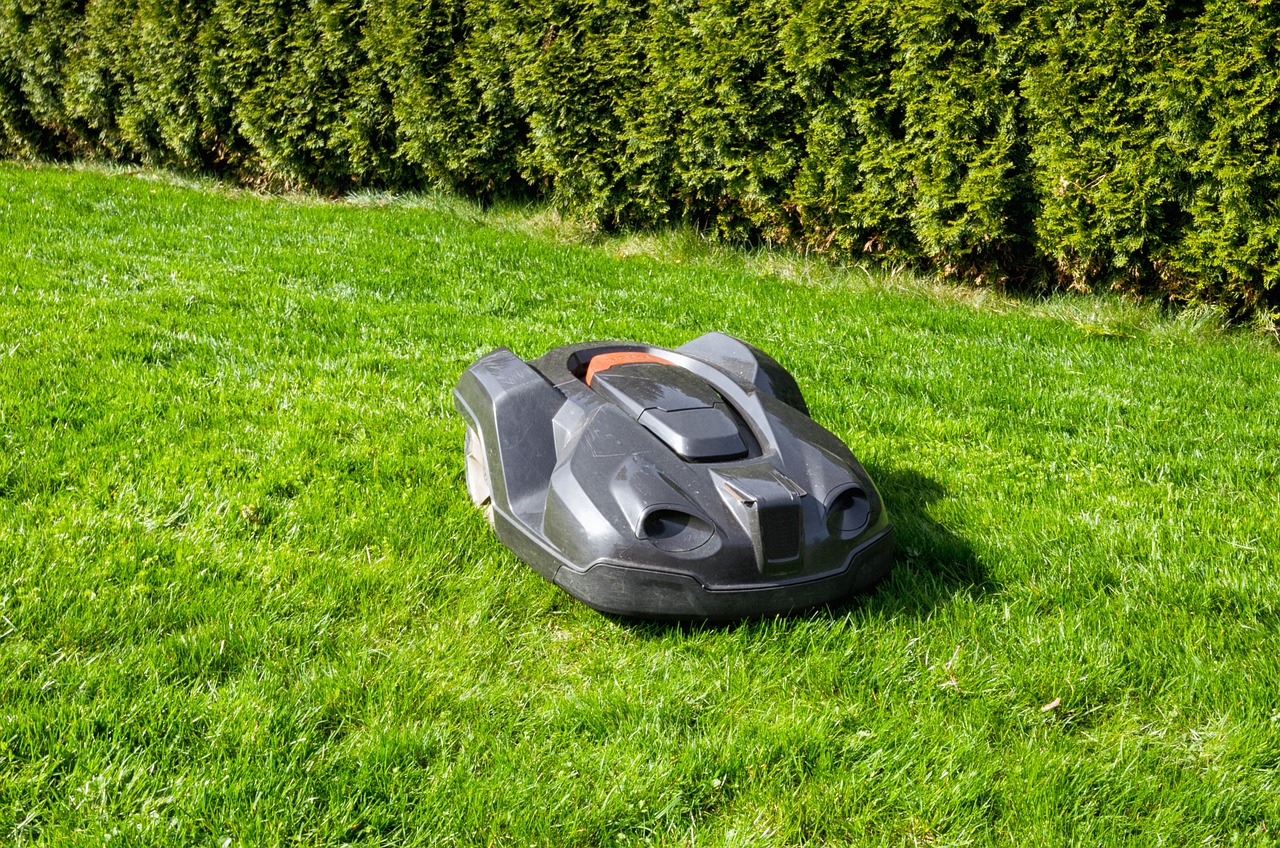
Technical Challenges
When it comes to deploying robotics in disaster response, we can't ignore the that often rear their heads like an unexpected storm. Imagine sending a drone into a disaster zone only to have it struggle against harsh winds or navigate through piles of debris. These obstacles can significantly hinder the performance and effectiveness of robotic systems, making the difference between a successful mission and a failed one. For instance, environmental conditions such as heavy rain, snow, or extreme temperatures can affect the sensors and battery life of drones and ground robots, limiting their operational range and functionality.
Moreover, the complexity of terrain poses another formidable challenge. Robots designed for urban environments may find it difficult to traverse rugged landscapes or navigate through collapsed buildings. This limitation is not just a minor inconvenience; it can lead to delays in search and rescue operations, ultimately impacting the lives of those trapped or in need of urgent assistance. In fact, a study revealed that nearly 30% of robotic missions in disaster scenarios faced significant delays due to terrain-related issues.
In addition to physical challenges, we must also consider the technical reliability of these systems. Robots rely on advanced software and hardware to perform their tasks, and any glitches or malfunctions can jeopardize their effectiveness. For example, if a drone's navigation system fails mid-flight, it might go off course, leading to wasted time and resources. This highlights the importance of rigorous testing and maintenance protocols to ensure that these robotic systems are not only functional but also reliable under pressure.
Finally, the integration of robots into existing disaster response frameworks can be a daunting task. Communication issues between human responders and robotic systems can lead to misunderstandings and operational inefficiencies. For instance, if a ground robot is unable to relay real-time data due to connectivity issues, human teams may find themselves making decisions based on outdated information, which could have dire consequences. Thus, addressing these technical challenges is crucial for maximizing the potential of robotics in disaster response.
- What types of robots are commonly used in disaster response?
Common types include drones for aerial surveillance and ground-based robots for navigating challenging terrains.
- How do drones assist in search and rescue operations?
Drones equipped with thermal imaging can locate survivors in rubble, significantly speeding up rescue efforts.
- What are the main challenges faced by robotics in disaster response?
Technical challenges include environmental conditions, terrain complexity, reliability issues, and communication problems.
- How is AI expected to impact future disaster response robotics?
AI will enhance robots' decision-making capabilities, allowing them to adapt to dynamic environments and perform complex tasks autonomously.
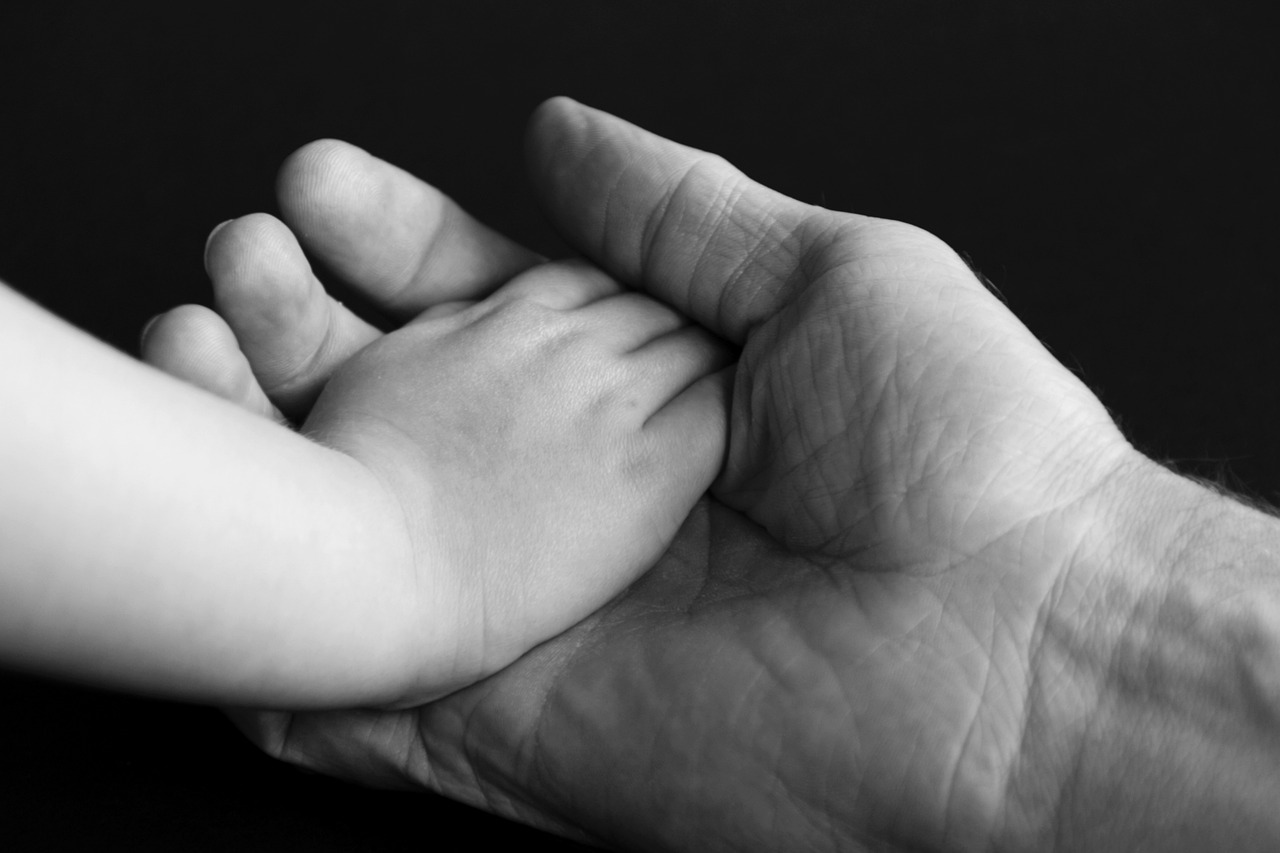
Cost Considerations
This article explores the transformative role of robotics in disaster response, examining various technologies and their applications in improving efficiency, safety, and effectiveness during emergencies.
Different types of robots are utilized in disaster scenarios, from drones to ground vehicles, each designed to address specific challenges and enhance situational awareness in crisis situations.
Autonomous drones play a crucial role in disaster response by providing aerial surveillance, delivering supplies, and assessing damage in inaccessible areas, significantly speeding up the response time.
Drones equipped with thermal imaging can locate survivors in rubble, making them invaluable in search and rescue operations following natural disasters, thereby saving lives.
Drones can gather real-time data on environmental conditions, helping responders make informed decisions and allocate resources more effectively during disaster relief efforts.
Drones can deliver essential supplies such as food, water, and medical aid to remote or dangerous areas, ensuring that affected populations receive timely assistance.
Ground-based robots are designed to navigate challenging terrains, providing support in search and rescue missions, as well as performing hazardous tasks that would be unsafe for human responders.
The integration of robotics into disaster response involves collaboration between robots and human responders, enhancing overall efficiency and safety during operations in crisis situations.
Training programs that incorporate robotic technologies prepare human responders to effectively utilize these tools, ensuring seamless integration during real-life disaster scenarios.
Effective communication systems between robots and human teams are essential for coordination, enabling swift decision-making and improved operational efficiency in disaster response efforts.
Despite their advantages, the use of robotics in disaster response faces challenges such as technical limitations, operational costs, and the need for robust regulatory frameworks to ensure safety and efficacy.
Robots may encounter difficulties in extreme conditions, such as debris or adverse weather, which can hinder their performance and effectiveness in disaster scenarios.
When it comes to implementing robotics in disaster response, one major hurdle is the . The initial investment in advanced robotic systems can be significant, often requiring organizations to allocate substantial funds to acquire the necessary technology. This includes not only the purchase price of the robots themselves but also the costs associated with training personnel to operate them effectively.
Moreover, ongoing maintenance and operational expenses can add to the financial burden. For instance, organizations must consider:
- Routine maintenance of robotic systems to ensure optimal performance.
- Upgrades and software updates to keep pace with technological advancements.
- Insurance and liability costs associated with deploying these machines in potentially hazardous environments.
For many organizations, especially those with limited budgets, these expenses can be daunting. They must weigh the benefits of enhanced response capabilities against the financial implications. In some cases, funding from government grants or partnerships with private sector companies can help alleviate these costs, making it easier to integrate robotics into their operations. However, the challenge remains that not every organization has access to these resources, which can create a disparity in disaster response capabilities across different regions.
The future of robotics in disaster response looks promising, with advancements in artificial intelligence, machine learning, and sensor technology paving the way for more efficient and capable robotic systems.
Artificial intelligence will enhance the decision-making capabilities of robots, allowing them to adapt to dynamic disaster environments and perform complex tasks autonomously.
Future robotic systems are expected to feature enhanced mobility solutions, enabling them to traverse diverse terrains and navigate obstacles more effectively during disaster response operations.
- What types of robots are most commonly used in disaster response? Drones and ground-based robots are the most prevalent, each serving unique functions such as surveillance, supply delivery, and search and rescue operations.
- How do drones improve disaster response times? Drones provide aerial surveillance and real-time data collection, allowing responders to assess situations quickly and allocate resources efficiently.
- What are the main challenges of using robotics in disaster response? Key challenges include technical limitations in extreme conditions, high operational costs, and the need for effective coordination with human teams.

Future Trends in Robotics for Disaster Response
The future of robotics in disaster response is not just a distant dream; it is unfolding right before our eyes. As technology advances, we are witnessing a remarkable evolution in how robots are designed and utilized during emergencies. With innovations in artificial intelligence, machine learning, and sensor technology, the capabilities of these robotic systems are set to expand significantly, making them more efficient and effective in saving lives and mitigating disaster impacts.
One of the most exciting trends is the integration of AI technologies. Imagine robots that can analyze vast amounts of data in real-time, enabling them to make quick decisions based on the shifting dynamics of a disaster scenario. For example, AI can help drones identify the safest routes for delivering supplies or navigating through debris. This adaptability is crucial, as disaster environments can change rapidly, requiring immediate responses that traditional systems may not handle effectively.
Moreover, the future will likely see improved mobility solutions in robotic systems. Current robots often struggle with navigating complex terrains, but upcoming advancements may introduce multi-terrain capabilities. These robots could traverse everything from rubble-strewn urban areas to flooded rural landscapes, significantly broadening their operational scope. With enhanced mobility, robots will be able to reach isolated victims faster, ensuring that help arrives when it is needed most.
Additionally, we can expect to see more collaborative efforts between robots and human responders. The integration of augmented reality (AR) and virtual reality (VR) technologies can facilitate training programs that simulate disaster scenarios. This will not only prepare human responders to work alongside robotic systems but will also enhance their understanding of how to leverage these tools effectively. Such training could be critical in high-stress environments, where quick thinking and seamless coordination are paramount.
As we look to the horizon, it's clear that the future of robotics in disaster response is bright and filled with potential. The marriage of cutting-edge technology with humanitarian efforts will not only streamline operations but will also save countless lives in the face of adversity. The ongoing research and development in this field promise a new era of disaster management where robots and humans work hand in hand, transforming the way we respond to emergencies.
- What types of robots are used in disaster response?
Various types of robots, including drones, ground vehicles, and underwater robots, are deployed based on the specific needs of the disaster scenario.
- How do drones aid in disaster response?
Drones provide aerial surveillance, deliver supplies, and assess damage, making them essential for rapid response in hard-to-reach areas.
- What are the challenges faced by robotic systems in disasters?
Technical limitations, high operational costs, and the need for regulatory frameworks are significant challenges that must be addressed.

Integration of AI Technologies
This article explores the transformative role of robotics in disaster response, examining various technologies and their applications in improving efficiency, safety, and effectiveness during emergencies.
Different types of robots are utilized in disaster scenarios, from drones to ground vehicles, each designed to address specific challenges and enhance situational awareness in crisis situations.
Autonomous drones play a crucial role in disaster response by providing aerial surveillance, delivering supplies, and assessing damage in inaccessible areas, significantly speeding up the response time.
Drones equipped with thermal imaging can locate survivors in rubble, making them invaluable in search and rescue operations following natural disasters, thereby saving lives.
Drones can gather real-time data on environmental conditions, helping responders make informed decisions and allocate resources more effectively during disaster relief efforts.
Drones can deliver essential supplies such as food, water, and medical aid to remote or dangerous areas, ensuring that affected populations receive timely assistance.
Ground-based robots are designed to navigate challenging terrains, providing support in search and rescue missions, as well as performing hazardous tasks that would be unsafe for human responders.
The integration of robotics into disaster response involves collaboration between robots and human responders, enhancing overall efficiency and safety during operations in crisis situations.
Training programs that incorporate robotic technologies prepare human responders to effectively utilize these tools, ensuring seamless integration during real-life disaster scenarios.
Effective communication systems between robots and human teams are essential for coordination, enabling swift decision-making and improved operational efficiency in disaster response efforts.
Despite their advantages, the use of robotics in disaster response faces challenges such as technical limitations, operational costs, and the need for robust regulatory frameworks to ensure safety and efficacy.
Robots may encounter difficulties in extreme conditions, such as debris or adverse weather, which can hinder their performance and effectiveness in disaster scenarios.
The initial investment and maintenance costs associated with advanced robotic systems can be significant, posing challenges for organizations with limited budgets in disaster response.
The future of robotics in disaster response looks promising, with advancements in artificial intelligence, machine learning, and sensor technology paving the way for more efficient and capable robotic systems.
The integration of artificial intelligence (AI) technologies into robotics is set to revolutionize disaster response. Imagine robots that can not only navigate through complex environments but also think and adapt to changing situations in real-time. This capability is crucial when responding to unpredictable disasters, where every second counts. For instance, AI can enable drones to analyze vast amounts of data collected from the scene, identifying patterns and making decisions that were previously reliant on human judgment. This means faster, more accurate responses that can ultimately save lives.
Furthermore, AI enhances the robots' ability to perform complex tasks autonomously. With machine learning algorithms, these robots can improve their performance over time, learning from each disaster response experience. They can adapt their strategies based on previous outcomes, which is a significant leap from traditional robotic systems that operate on pre-defined commands. This adaptability is akin to a seasoned firefighter who learns from every blaze fought, becoming more effective with each experience.
To illustrate the capabilities that AI brings to disaster response, consider the following table:
| AI Capability | Description | Impact on Disaster Response |
|---|---|---|
| Real-Time Decision Making | AI analyzes data and provides actionable insights instantly. | Increases response speed and effectiveness. |
| Autonomous Navigation | Robots can navigate through debris without human intervention. | Improves safety for human responders. |
| Data Analysis | AI can process and interpret large datasets swiftly. | Enhances situational awareness and resource allocation. |
In summary, the integration of AI technologies into robotics not only enhances the operational capabilities of these machines but also transforms the overall approach to disaster response. The future is bright, and as we continue to innovate, the potential for saving lives and minimizing the impact of disasters becomes ever more attainable.
- How do robots improve disaster response?
Robots enhance disaster response by providing real-time data, performing hazardous tasks, and delivering supplies to inaccessible areas, thereby improving efficiency and safety. - What are the main challenges of using robots in disasters?
Challenges include technical limitations in extreme conditions, high operational costs, and the need for proper regulatory frameworks. - What role does AI play in disaster response robotics?
AI enables robots to make real-time decisions, learn from experiences, and adapt to dynamic environments, greatly enhancing their effectiveness.

Improved Mobility Solutions
As we look to the future, one of the most exciting advancements in robotics for disaster response is the development of . Traditional robots often struggle with the unpredictable and treacherous terrains that disasters create. Imagine a landslide or a collapsed building—navigating through such environments can be daunting for any machine. However, emerging technologies are paving the way for robots that can overcome these obstacles with ease.
Enhanced mobility solutions are not just about moving from point A to point B; they encompass a range of capabilities that allow robots to adapt to their surroundings. For instance, the integration of artificial intelligence enables robots to analyze their environment in real-time, making split-second decisions about the best paths to take. This adaptability is crucial in disaster scenarios where the landscape can change rapidly due to aftershocks or further debris shifts.
Some of the innovative features being developed include:
- Multi-terrain capabilities: Robots are being designed to traverse various surfaces, from rubble to mud, ensuring they can operate effectively in any disaster scenario.
- Advanced sensor technologies: These sensors allow robots to detect obstacles and assess the terrain, providing crucial data to human responders.
- Robotic limbs and appendages: Some robots are being equipped with flexible limbs that mimic human movement, allowing them to navigate tight spaces and perform tasks that were previously impossible.
For example, consider a robot designed for urban search and rescue operations. It might feature tracks for stability on uneven ground, combined with articulated arms that can reach into crevices to retrieve trapped individuals or deliver supplies. This kind of versatility is a game-changer in emergency situations.
Moreover, the future of mobility solutions also includes collaborative robots or cobots that work alongside human responders. These robots can carry heavy loads, assist in lifting debris, or even provide medical supplies to first responders in hard-to-reach areas. By working together, humans and robots can maximize their strengths, leading to faster and more efficient disaster response efforts.
In conclusion, the potential for improved mobility solutions in robotics is vast. As these technologies continue to evolve, they promise to enhance our capabilities in disaster response significantly. By ensuring that robots can navigate challenging environments effectively, we can improve the safety and efficiency of rescue operations, ultimately saving more lives.
Q: How do improved mobility solutions enhance disaster response?
A: Improved mobility solutions allow robots to navigate challenging terrains effectively, making them invaluable in disaster scenarios where traditional methods may fail. These advancements lead to quicker and more efficient rescue operations.
Q: What types of terrains can modern robots navigate?
A: Modern robots are being designed to handle a variety of terrains, including rubble, mud, and uneven surfaces, thanks to advanced sensor technologies and multi-terrain capabilities.
Q: Can robots work alongside human responders?
A: Absolutely! Collaborative robots, or cobots, are designed to work in tandem with human responders, assisting with heavy lifting, delivering supplies, and performing tasks that enhance overall efficiency during disaster response.
Frequently Asked Questions
- What types of robots are used in disaster response?
In disaster response, various types of robots are utilized, including autonomous drones for aerial surveillance and supply delivery, as well as ground-based robots designed to navigate challenging terrains. Each type is tailored to tackle specific challenges, enhancing situational awareness and operational efficiency during emergencies.
- How do autonomous drones assist in disaster scenarios?
Autonomous drones play a vital role by providing aerial surveillance, assessing damage in hard-to-reach areas, and delivering essential supplies like food and medical aid. They can also locate survivors using thermal imaging, making them invaluable in search and rescue missions following natural disasters.
- What challenges do robotics face in disaster response?
Despite their advantages, robotics in disaster response encounter several challenges, including technical limitations due to extreme conditions like debris or adverse weather, and cost considerations related to initial investments and ongoing maintenance, which can be a barrier for organizations with limited budgets.
- How do robots collaborate with human responders?
Robots collaborate with human responders through effective communication and coordination systems, ensuring that teams can make swift decisions and operate efficiently. Training programs that incorporate robotic technologies help prepare responders to utilize these tools seamlessly during actual disaster scenarios.
- What is the future of robotics in disaster response?
The future looks bright for robotics in disaster response, with advancements in artificial intelligence and sensor technology set to enhance decision-making capabilities and mobility solutions. These innovations will enable robots to adapt to dynamic environments and perform complex tasks more effectively.






